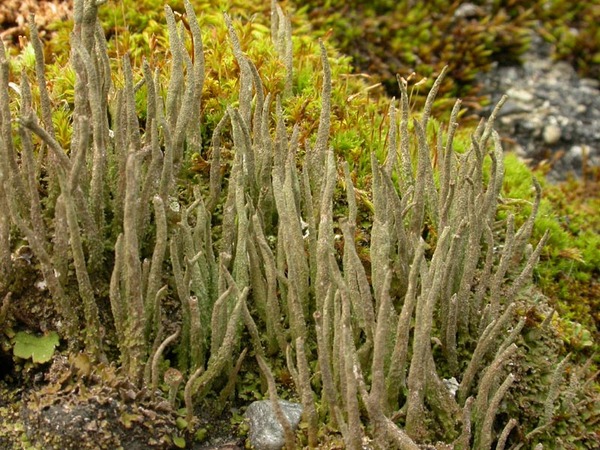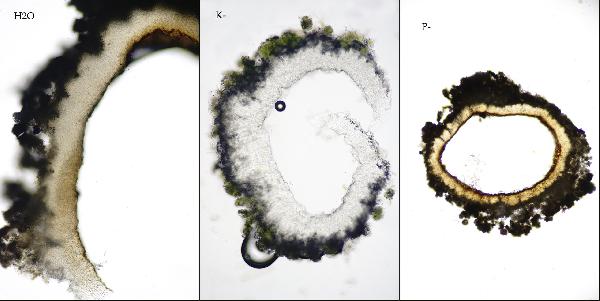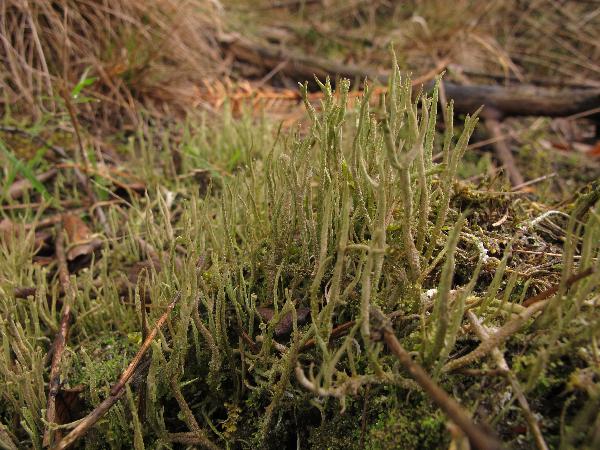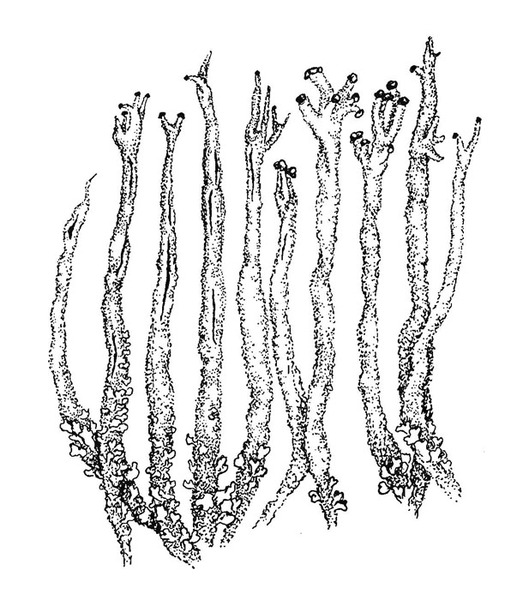Cladonia rei Schaer.
Lich. Helv. Spicil., 1, 1: 34, 1823.
Synonyms: Cladonia fimbriata var. nemoxyna (Ach.) Coëm.; Cladonia nemoxyna (Ach.) Arnold
Distribution: N - VG (Castello 2002, Martellos & Castello 2004), Frl (Tretiach & Molaro 2007), Ven (Ravera & al. 2022b), TAA (Nascimbene & al. 2022), Lomb (Rivellini & Valcuvia 1996, Gheza 2015, 2018, Lich. Ital. Exs. 20: Isocrono & al. 2018, Gheza & al. 2022, Rapaccini & al. 2025), Piem (Isocrono & al. 2004, Gheza 2015, 2018, 2020, Gheza & Nascimbene 2024), Lig (Gheza & al. 2020). C - Tosc (Gheza & al. 2020). S - Si (Burgaz & al. 2019, 2020)
Description: Primary thallus squamulose, persistent or evanescent, the squamules small, up to c. 3 mm long, incised, greenish to pale brownish grey above, white beneath. Podetia elongate, hollow inside, pale brownish grey, (1-)3-5 cm tall, 1.5-2 mm thick, simple or sparingly branched, with pointed apices, more rarely with irregular small cups, often corticate and squamulose in lower half (the cortex verrucose-granular), granulose-sorediate in upper part, the soredia (20-)30-60 μm in diam. Apothecia rather rare, terminal, brown, convex. Asci 8-spored, clavate, thickened at apex, with a K/I+ blue tholus and a K/I+ strongly blue outer gelatinous sheath, Cladonia-type. Spores 1-celled, hyaline, ellipsoid. Pycnidia brown, at the tips of podetia or rarely on the margins of squamules, with a colourless jelly. Conidia hyaline, curved. Photobiont chlorococcoid. Spot tests: podetia K-, C-, KC-, P+ red or P-, UV+ white or UV-. Chemistry: homosekikaic and sekikaik acids, sometimes with additional fumarprotocetraric acid.Note: a mainly temperate, probably holarctic species described from Italy, found on mineral clay and base-rich soil, mostly in slightly disturbed habitats such as on track sides and clearings of light forests and heaths. To be looked for in Central and Southern Italy. Spier & Aptroot (2007) considered it as a synonym and chemotype of C. subulata (but see Pino-Bodas & al. 2010b).
Growth form: Fruticose
Substrata: soil, terricolous mosses, and plant debris
Photobiont: green algae other than Trentepohlia
Reproductive strategy: mainly asexual, by soredia, or soredia-like structures (e.g. blastidia)
Commonnes-rarity: (info)
Alpine belt: absent
Subalpine belt: absent
Oromediterranean belt: absent
Montane belt: extremely rare
Submediterranean belt: rare
Padanian area: extremely rare
Humid submediterranean belt: very rare
Humid mediterranean belt: absent
Dry mediterranean belt: absent
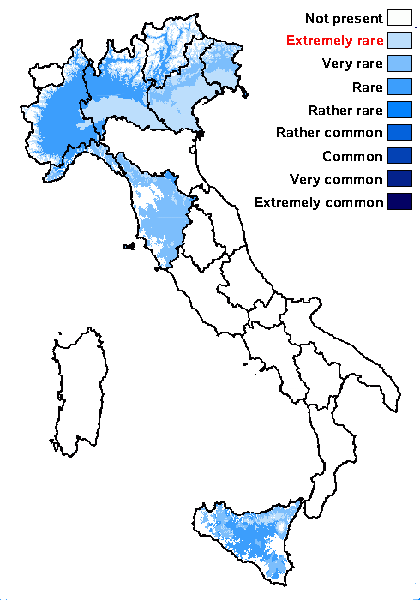
Predictive model
Herbarium samples
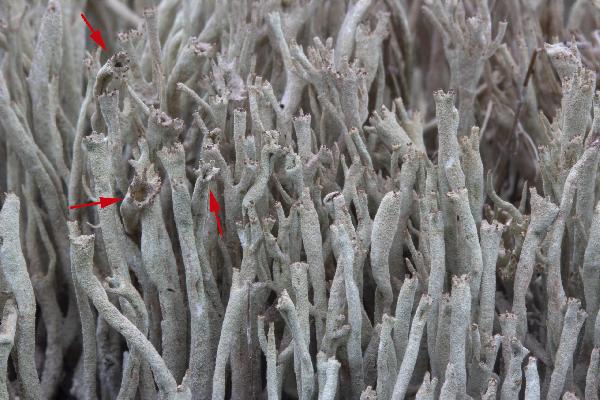
Marta González Garcia - Centro de Estudios Micologicos Asturianos
Spain, Arrojo (Quirós-Asturias), 18-VII-2023, sobre una malla decorativa rellena de tierra, leg. M. González, det. A. R. Burgaz, MGG-36, (con ácido homosekikaico y fumarprotocetrárico).
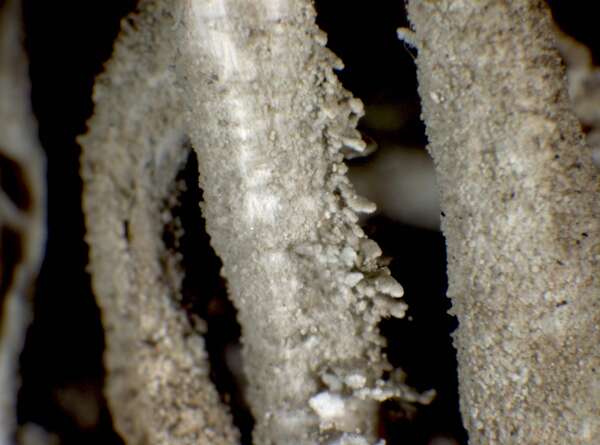

P.L. Nimis; Owner: Department of Life Sciences, University of Trieste
Herbarium: TSB (13739)
2001/12/04
detail of base of podetium
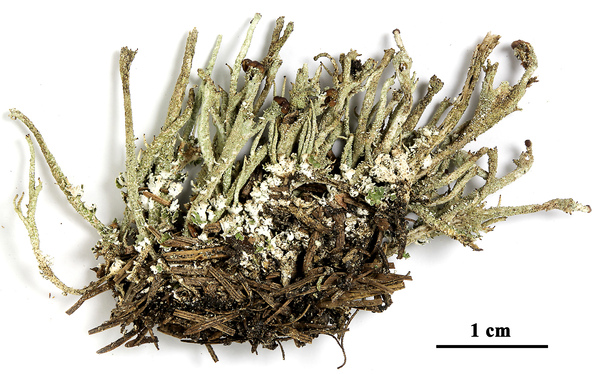

Felix Schumm - CC BY-SA 4.0
[20300], Austria, Salzburg, Eastern Alps, Lower Tauern, Pongau region (= St. Hohann im Pongau District), 2.3 km N of the centre of Bischofshofen, 2 km SSE of Pfarrwerfen, Sinnhub, 47°26'25'' N, 13°12'48'' E, 540, on rotten wood and debris (on roofing shingles of Larix decidua). Leg.R. Türk (58198), 16.07.2017, det. H. Mayrhofer. DUPLA GRAECENSIA LICHENUM NR. 449.


Felix Schumm – CC BY-SA 4.0
[2856], Spanien, Kanarische Inseln, Hierro, 400 m, NO-NW, pH 6,6, Sabinar de la Dehesa in der Sturmzone an der westlichen Inselabdachung. Leg. G. Follmann & Hernández-Padrón März 1980. Det. T. Ahti 3.1980. Lich. Exs. Sel. Mus. Casselensi Ed. 327.
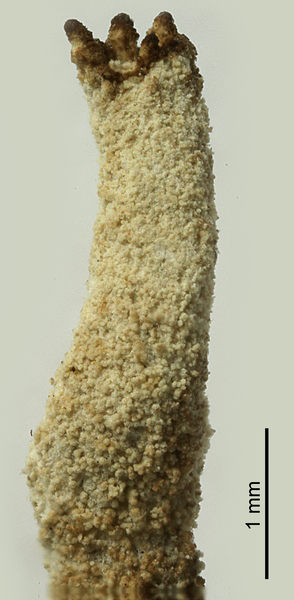

Felix Schumm – CC BY-SA 4.0
[2856], Spanien, Kanarische Inseln, Hierro, 400 m, NO-NW, pH 6,6, Sabinar de la Dehesa in der Sturmzone an der westlichen Inselabdachung. Leg. G. Follmann & Hernández-Padrón März 1980. Det. T. Ahti 3.1980. Lich. Exs. Sel. Mus. Casselensi Ed. 327.
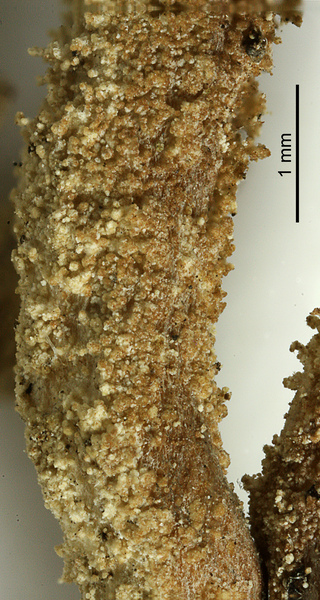

Felix Schumm – CC BY-SA 4.0
[2856], Spanien, Kanarische Inseln, Hierro, 400 m, NO-NW, pH 6,6, Sabinar de la Dehesa in der Sturmzone an der westlichen Inselabdachung. Leg. G. Follmann & Hernández-Padrón März 1980. Det. T. Ahti 3.1980. Lich. Exs. Sel. Mus. Casselensi Ed. 327.
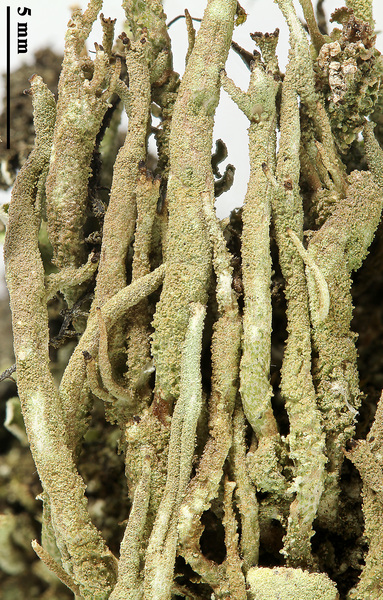

Felix Schumm – CC BY-SA 4.0
[19499], Germany, Hessen, Amöneburg bei Marburg, sonnige Basaltblöcke in einer Hangwiese kurz vor dem Ortseingang, 50.7896° N, 8.91995° E, 324 m. Leg. F. Schumm, 01.08.2016, det. F. Schumm.
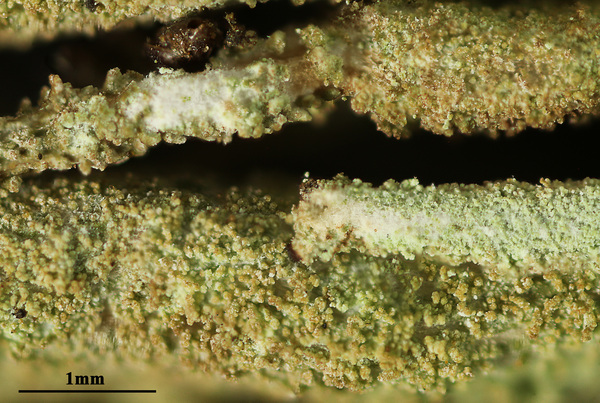

Felix Schumm – CC BY-SA 4.0
[19499], Germany, Hessen, Amöneburg bei Marburg, sonnige Basaltblöcke in einer Hangwiese kurz vor dem Ortseingang, 50.7896° N, 8.91995° E, 324 m. Leg. F. Schumm, 01.08.2016, det. F. Schumm.
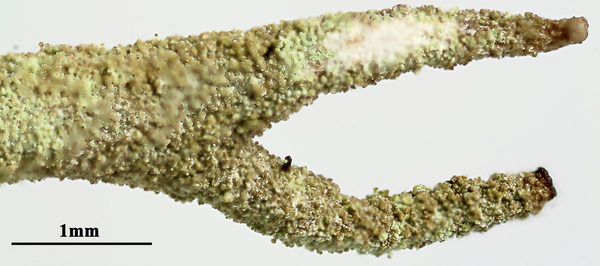

Felix Schumm – CC BY-SA 4.0
[19499], Germany, Hessen, Amöneburg bei Marburg, sonnige Basaltblöcke in einer Hangwiese kurz vor dem Ortseingang, 50.7896° N, 8.91995° E, 324 m. Leg. F. Schumm, 01.08.2016, det. F. Schumm.
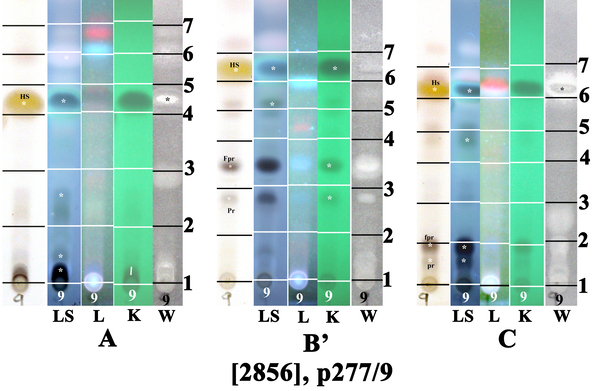

Felix Schumm – CC BY-SA 4.0
[2856], Spanien, Kanarische Inseln, Hierro, 400 m, NO-NW, pH 6,6, Sabinar de la Dehesa in der Sturmzone an der westlichen Inselabdachung. Leg. G. Follmann & Hernández-Padrón März 1980. Det. T. Ahti 3.1980. Lich. Exs. Sel. Mus. Casselensi Ed. 327.,
193 Cladonia rei pr: protocetraric acid, fpr: fumarprotocetraric acid, HS: homosekikaic acid


Felix Schumm – CC BY-SA 4.0
[2856], Spanien, Kanarische Inseln, Hierro, 400 m, NO-NW, pH 6,6, Sabinar de la Dehesa in der Sturmzone an der westlichen Inselabdachung. Leg. G. Follmann & Hernández-Padrón März 1980. Det. T. Ahti 3.1980. Lich. Exs. Sel. Mus. Casselensi Ed. 327.,
193 Cladonia rei pr: protocetraric acid, fpr: fumarprotocetraric acid, HS: homosekikaic acid


Felix Schumm – CC BY-SA 4.0
[19499], Germany, Hessen, Amöneburg bei Marburg, sonnige Basaltblöcke in einer Hangwiese kurz vor dem Ortseingang, 50.7896° N, 8.91995° E, 324 m. Leg. F. Schumm, 01.08.2016, det. F. Schumm.
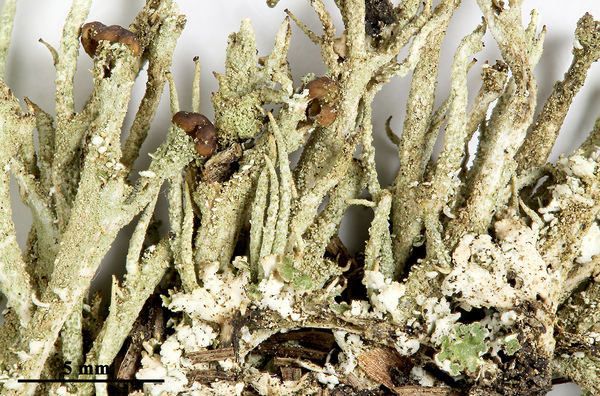

Felix Schumm - CC BY-SA 4.0
[20300], Austria, Salzburg, Eastern Alps, Lower Tauern, Pongau region (= St. Hohann im Pongau District), 2.3 km N of the centre of Bischofshofen, 2 km SSE of Pfarrwerfen, Sinnhub, 47°26'25'' N, 13°12'48'' E, 540, on rotten wood and debris (on roofing shingles of Larix decidua). Leg.R. Türk (58198), 16.07.2017, det. H. Mayrhofer. DUPLA GRAECENSIA LICHENUM NR. 449.
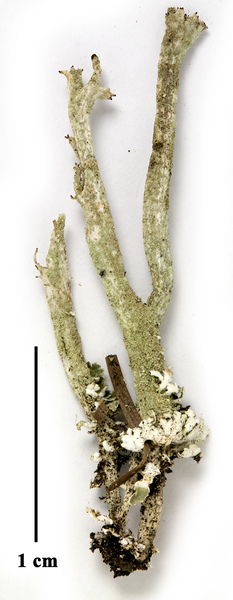

Felix Schumm - CC BY-SA 4.0
[20300], Austria, Salzburg, Eastern Alps, Lower Tauern, Pongau region (= St. Hohann im Pongau District), 2.3 km N of the centre of Bischofshofen, 2 km SSE of Pfarrwerfen, Sinnhub, 47°26'25'' N, 13°12'48'' E, 540, on rotten wood and debris (on roofing shingles of Larix decidua). Leg.R. Türk (58198), 16.07.2017, det. H. Mayrhofer. DUPLA GRAECENSIA LICHENUM NR. 449.
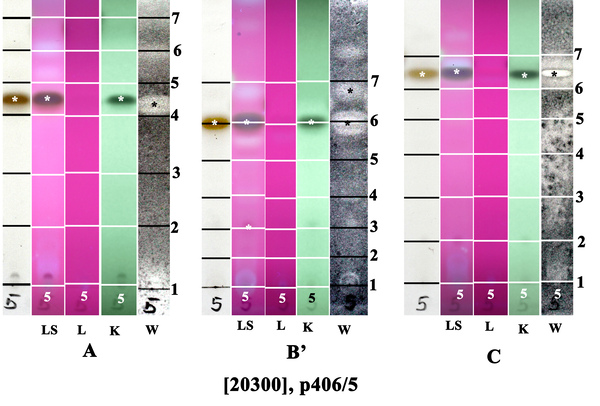

Felix Schumm - CC BY-SA 4.0
[20300], Austria, Salzburg, Eastern Alps, Lower Tauern, Pongau region (= St. Hohann im Pongau District), 2.3 km N of the centre of Bischofshofen, 2 km SSE of Pfarrwerfen, Sinnhub, 47°26'25'' N, 13°12'48'' E, 540, on rotten wood and debris (on roofing shingles of Larix decidua). Leg.R. Türk (58198), 16.07.2017, det. H. Mayrhofer. DUPLA GRAECENSIA LICHENUM NR. 449.
H: homosekikaic acid (maj), f: fumarprotocetraric acid (tr)
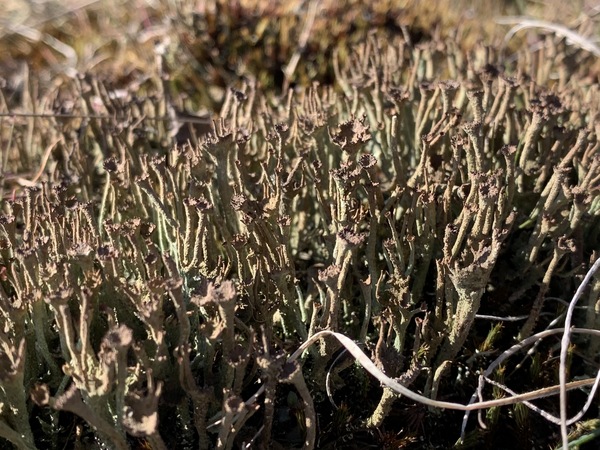
Gabriele Gheza - https://lichenidilombardia.home.blog
Italy, Lombardia, Varese, Vizzola Ticino, valle del Ticino, 162 m
23/03/2021
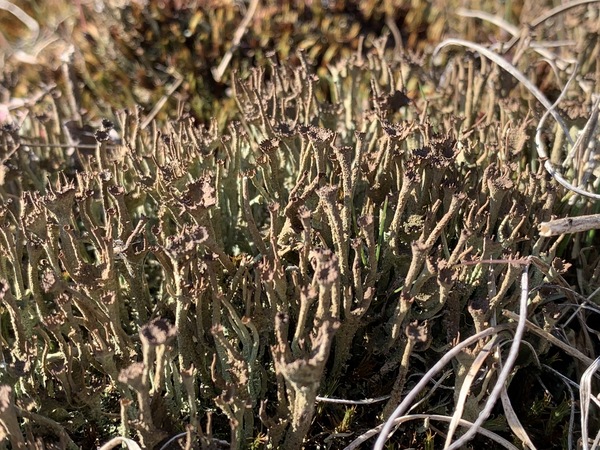
Gabriele Gheza - https://lichenidilombardia.home.blog
Italy, Lombardia, Varese, Vizzola Ticino, valle del Ticino, 162 m
23/03/2021
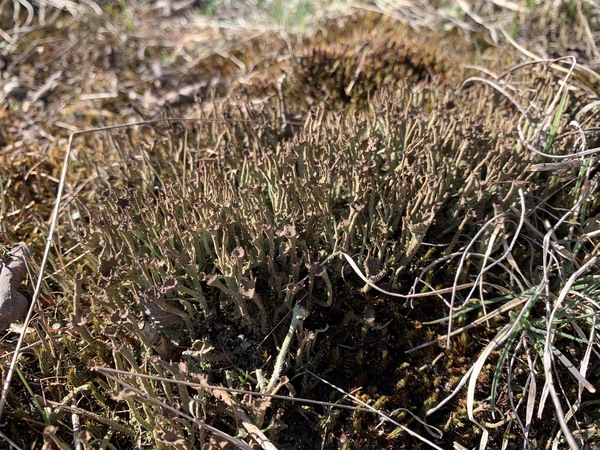
Gabriele Gheza - https://lichenidilombardia.home.blog
Italy, Lombardia, Varese, Vizzola Ticino, valle del Ticino, 162 m
23/03/2021
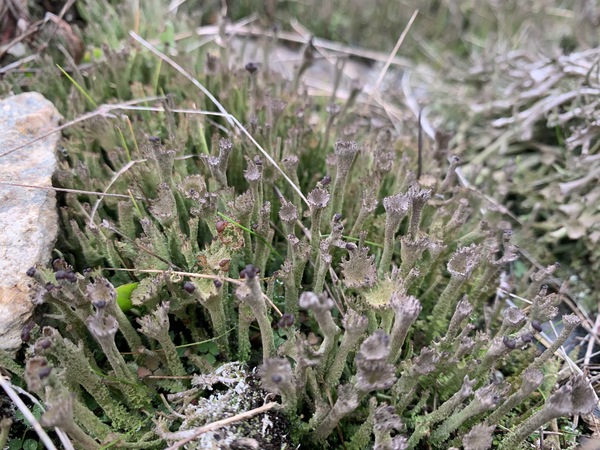
Gabriele Gheza - https://lichenidilombardia.home.blog
Italy, Piemonte, Vercelli, Greggio, greto del Sesia, 166 m
23/12/2020
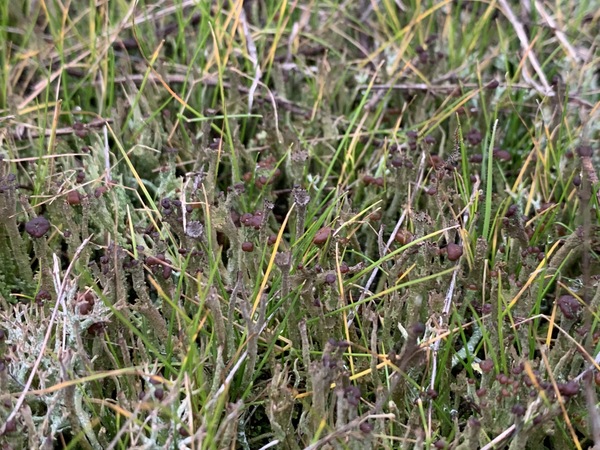
Gabriele Gheza - https://lichenidilombardia.home.blog
Italy, Piemonte, Vercelli, Greggio, greto del Sesia, 166 m
23/12/2020

Gabriele Gheza - https://lichenidilombardia.home.blog
Italy, Piemonte, Vercelli, Greggio, greto del Sesia, 166 m
23/12/2020

Gabriele Gheza - https://lichenidilombardia.home.blog
Italy, Lombardia, Sondrio, Valmasino, 1047 m
08/2019
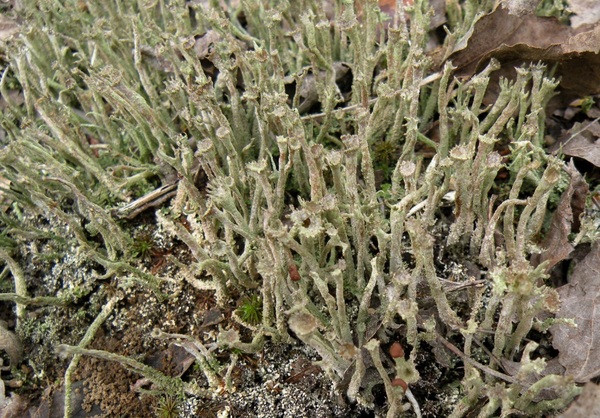
Gabriele Gheza - https://lichenidilombardia.home.blog
Italy, Lombardia, Varese, Lonate Pozzolo, 220 m
10/2013
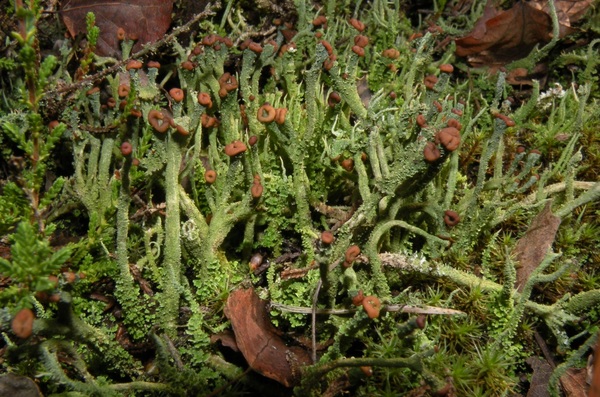
Gabriele Gheza - https://lichenidilombardia.home.blog
Italy, Lombardia, Varese, Lonate Pozzolo, 220 m
10/2013
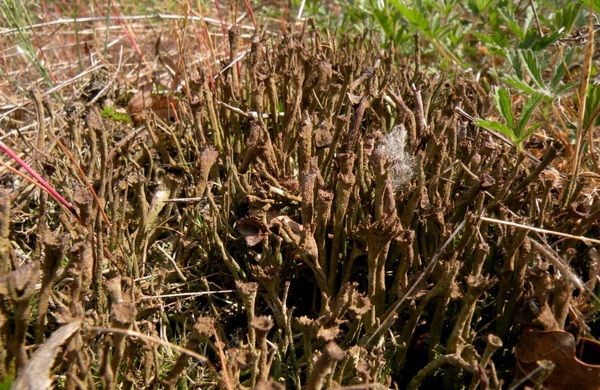
Gabriele Gheza - https://lichenidilombardia.home.blog
Italy, Piemonte, Novara, Pombia, valle del Ticino, 165 m
05/2014

Gabriele Gheza - https://lichenidilombardia.home.blog
Italy, Piemonte, Vercelli, Greggio, greto del Sesia, 161 m
04/03/2016
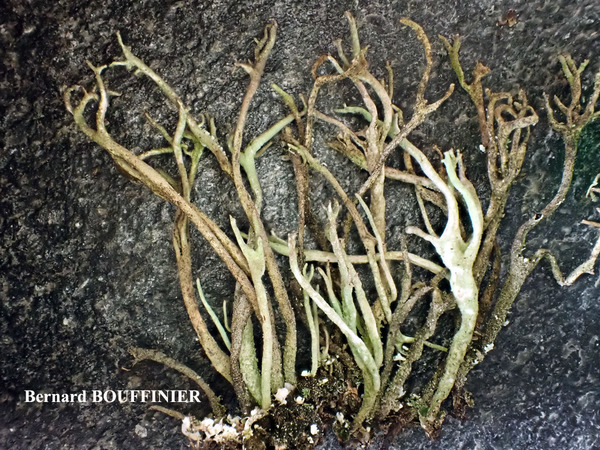
Bernard Bouffinier - Source: http://www.lichensmaritimes.org/index.php?task=fiche&lichen=544&lang=en
France, Commana

Bernard Bouffinier - Source: http://www.lichensmaritimes.org/index.php?task=fiche&lichen=544&lang=en
France, Commana
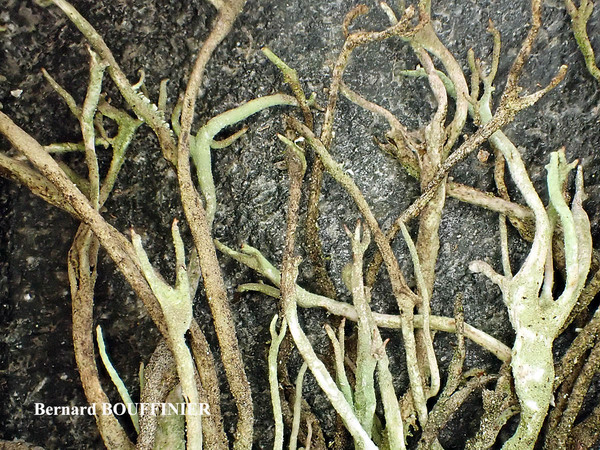
Bernard Bouffinier - Source: http://www.lichensmaritimes.org/index.php?task=fiche&lichen=544&lang=en
France, Commana
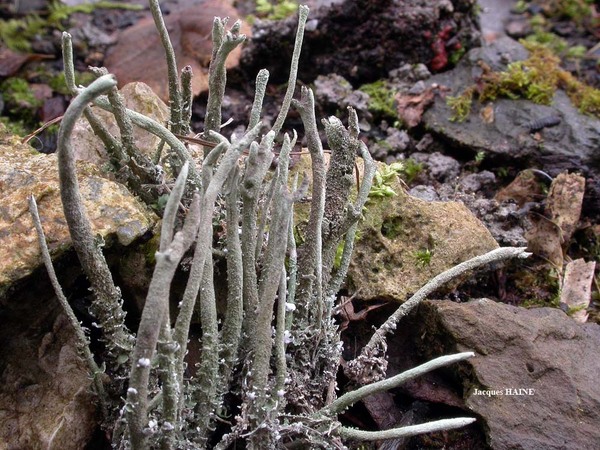
Jacques Haine - Source: http://www.lichensmaritimes.org/index.php?task=fiche&lichen=544&lang=en
France, Monthermé
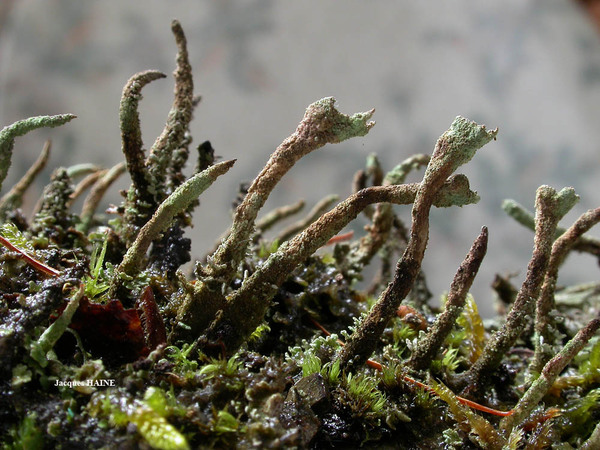
Jacques Haine - Source: http://www.lichensmaritimes.org/index.php?task=fiche&lichen=544&lang=en
France, Monthermé
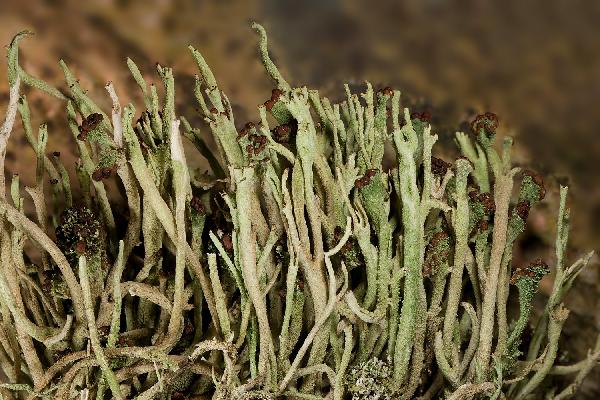
Ulrich Kirschbaum CC BY-SA 4.0 - Source: https://www.thm.de/lse/ulrich-kirschbaum/flechtenbilder
Central Europe; Germany; Brandenburg: Niederlausitz.
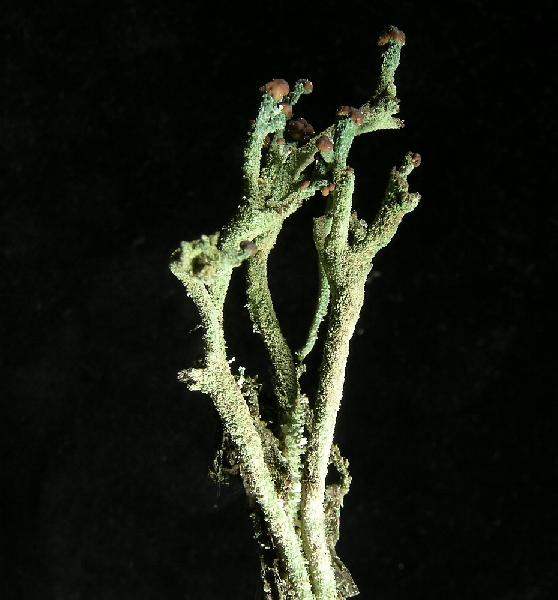
Ulrich Kirschbaum CC BY-SA 4.0 - Source: https://www.thm.de/lse/ulrich-kirschbaum/flechtenbilder
Central Europe.

Marta González Garcia - Centro de Estudios Micologicos Asturianos
Spain, Arrojo (Quirós-Asturias), 18-VII-2023, sobre una malla decorativa rellena de tierra, leg. M. González, det. A. R. Burgaz, MGG-36, (con ácido homosekikaico y fumarprotocetrárico).
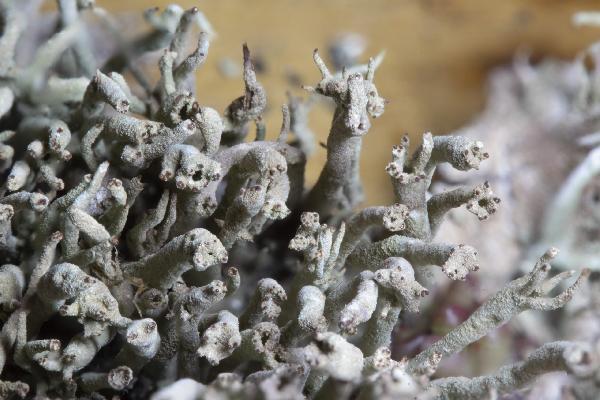
Marta González Garcia - Centro de Estudios Micologicos Asturianos
Spain, Arrojo (Quirós-Asturias), 18-VII-2023, sobre una malla decorativa rellena de tierra, leg. M. González, det. A. R. Burgaz, MGG-36, (con ácido homosekikaico y fumarprotocetrárico).
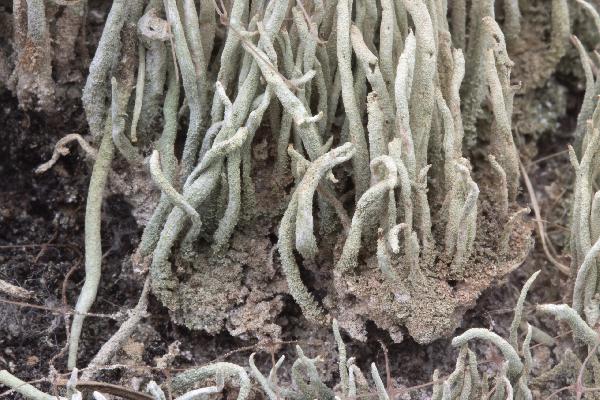
Marta González Garcia - Centro de Estudios Micologicos Asturianos
Spain, Arrojo (Quirós-Asturias), 18-VII-2023, sobre una malla decorativa rellena de tierra, leg. M. González, det. A. R. Burgaz, MGG-36, (con ácido homosekikaico y fumarprotocetrárico).
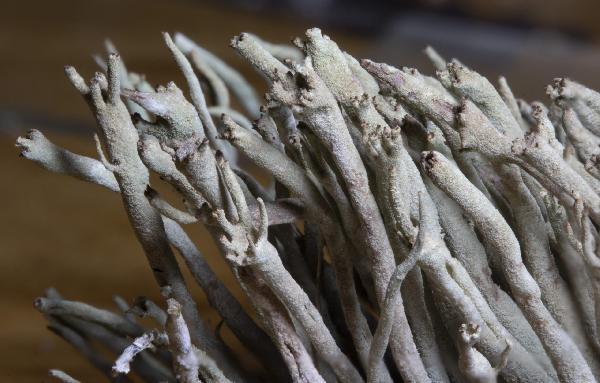
Marta González Garcia - Centro de Estudios Micologicos Asturianos
Spain, Arrojo (Quirós-Asturias), 18-VII-2023, sobre una malla decorativa rellena de tierra, leg. M. González, det. A. R. Burgaz, MGG-36, (con ácido homosekikaico y fumarprotocetrárico).
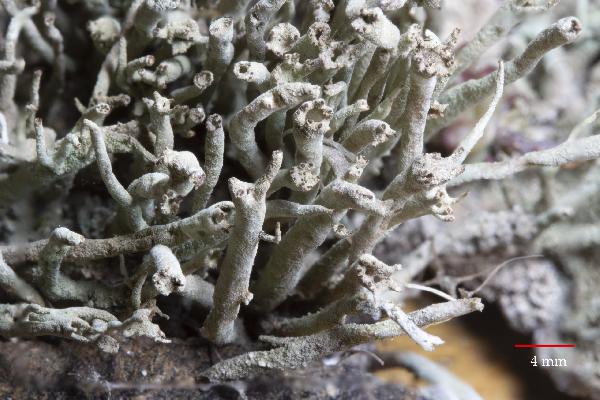
Marta González Garcia - Centro de Estudios Micologicos Asturianos
Spain, Arrojo (Quirós-Asturias), 18-VII-2023, sobre una malla decorativa rellena de tierra, leg. M. González, det. A. R. Burgaz, MGG-36, (con ácido homosekikaico y fumarprotocetrárico).
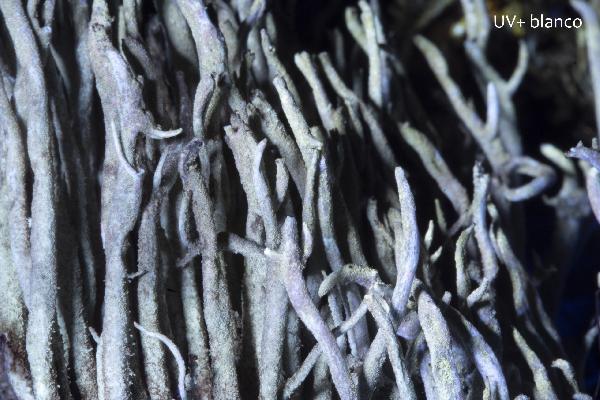
Marta González Garcia - Centro de Estudios Micologicos Asturianos
Spain, Arrojo (Quirós-Asturias), 18-VII-2023, sobre una malla decorativa rellena de tierra, leg. M. González, det. A. R. Burgaz, MGG-36, (con ácido homosekikaico y fumarprotocetrárico).
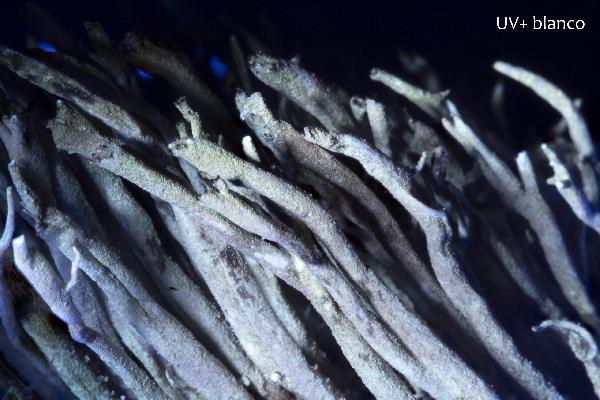
Marta González Garcia - Centro de Estudios Micologicos Asturianos
Spain, Arrojo (Quirós-Asturias), 18-VII-2023, sobre una malla decorativa rellena de tierra, leg. M. González, det. A. R. Burgaz, MGG-36, (con ácido homosekikaico y fumarprotocetrárico).
UV+ white
Growth form: Fruticose
Substrata: soil, terricolous mosses, and plant debris
Photobiont: green algae other than Trentepohlia
Reproductive strategy: mainly asexual, by soredia, or soredia-like structures (e.g. blastidia)
Commonnes-rarity: (info)
Alpine belt: absent
Subalpine belt: absent
Oromediterranean belt: absent
Montane belt: extremely rare
Submediterranean belt: rare
Padanian area: extremely rare
Humid submediterranean belt: very rare
Humid mediterranean belt: absent
Dry mediterranean belt: absent

Predictive model
| Herbarium samples |

Marta González Garcia - Centro de Estudios Micologicos Asturianos
Spain, Arrojo (Quirós-Asturias), 18-VII-2023, sobre una malla decorativa rellena de tierra, leg. M. González, det. A. R. Burgaz, MGG-36, (con ácido homosekikaico y fumarprotocetrárico).


P.L. Nimis; Owner: Department of Life Sciences, University of Trieste
Herbarium: TSB (13739)
2001/12/04
detail of base of podetium


Felix Schumm - CC BY-SA 4.0
[20300], Austria, Salzburg, Eastern Alps, Lower Tauern, Pongau region (= St. Hohann im Pongau District), 2.3 km N of the centre of Bischofshofen, 2 km SSE of Pfarrwerfen, Sinnhub, 47°26'25'' N, 13°12'48'' E, 540, on rotten wood and debris (on roofing shingles of Larix decidua). Leg.R. Türk (58198), 16.07.2017, det. H. Mayrhofer. DUPLA GRAECENSIA LICHENUM NR. 449.


Felix Schumm – CC BY-SA 4.0
[2856], Spanien, Kanarische Inseln, Hierro, 400 m, NO-NW, pH 6,6, Sabinar de la Dehesa in der Sturmzone an der westlichen Inselabdachung. Leg. G. Follmann & Hernández-Padrón März 1980. Det. T. Ahti 3.1980. Lich. Exs. Sel. Mus. Casselensi Ed. 327.


Felix Schumm – CC BY-SA 4.0
[2856], Spanien, Kanarische Inseln, Hierro, 400 m, NO-NW, pH 6,6, Sabinar de la Dehesa in der Sturmzone an der westlichen Inselabdachung. Leg. G. Follmann & Hernández-Padrón März 1980. Det. T. Ahti 3.1980. Lich. Exs. Sel. Mus. Casselensi Ed. 327.


Felix Schumm – CC BY-SA 4.0
[2856], Spanien, Kanarische Inseln, Hierro, 400 m, NO-NW, pH 6,6, Sabinar de la Dehesa in der Sturmzone an der westlichen Inselabdachung. Leg. G. Follmann & Hernández-Padrón März 1980. Det. T. Ahti 3.1980. Lich. Exs. Sel. Mus. Casselensi Ed. 327.


Felix Schumm – CC BY-SA 4.0
[19499], Germany, Hessen, Amöneburg bei Marburg, sonnige Basaltblöcke in einer Hangwiese kurz vor dem Ortseingang, 50.7896° N, 8.91995° E, 324 m. Leg. F. Schumm, 01.08.2016, det. F. Schumm.


Felix Schumm – CC BY-SA 4.0
[19499], Germany, Hessen, Amöneburg bei Marburg, sonnige Basaltblöcke in einer Hangwiese kurz vor dem Ortseingang, 50.7896° N, 8.91995° E, 324 m. Leg. F. Schumm, 01.08.2016, det. F. Schumm.


Felix Schumm – CC BY-SA 4.0
[19499], Germany, Hessen, Amöneburg bei Marburg, sonnige Basaltblöcke in einer Hangwiese kurz vor dem Ortseingang, 50.7896° N, 8.91995° E, 324 m. Leg. F. Schumm, 01.08.2016, det. F. Schumm.


Felix Schumm – CC BY-SA 4.0
[2856], Spanien, Kanarische Inseln, Hierro, 400 m, NO-NW, pH 6,6, Sabinar de la Dehesa in der Sturmzone an der westlichen Inselabdachung. Leg. G. Follmann & Hernández-Padrón März 1980. Det. T. Ahti 3.1980. Lich. Exs. Sel. Mus. Casselensi Ed. 327.,
193 Cladonia rei pr: protocetraric acid, fpr: fumarprotocetraric acid, HS: homosekikaic acid


Felix Schumm – CC BY-SA 4.0
[2856], Spanien, Kanarische Inseln, Hierro, 400 m, NO-NW, pH 6,6, Sabinar de la Dehesa in der Sturmzone an der westlichen Inselabdachung. Leg. G. Follmann & Hernández-Padrón März 1980. Det. T. Ahti 3.1980. Lich. Exs. Sel. Mus. Casselensi Ed. 327.,
193 Cladonia rei pr: protocetraric acid, fpr: fumarprotocetraric acid, HS: homosekikaic acid


Felix Schumm – CC BY-SA 4.0
[19499], Germany, Hessen, Amöneburg bei Marburg, sonnige Basaltblöcke in einer Hangwiese kurz vor dem Ortseingang, 50.7896° N, 8.91995° E, 324 m. Leg. F. Schumm, 01.08.2016, det. F. Schumm.


Felix Schumm - CC BY-SA 4.0
[20300], Austria, Salzburg, Eastern Alps, Lower Tauern, Pongau region (= St. Hohann im Pongau District), 2.3 km N of the centre of Bischofshofen, 2 km SSE of Pfarrwerfen, Sinnhub, 47°26'25'' N, 13°12'48'' E, 540, on rotten wood and debris (on roofing shingles of Larix decidua). Leg.R. Türk (58198), 16.07.2017, det. H. Mayrhofer. DUPLA GRAECENSIA LICHENUM NR. 449.


Felix Schumm - CC BY-SA 4.0
[20300], Austria, Salzburg, Eastern Alps, Lower Tauern, Pongau region (= St. Hohann im Pongau District), 2.3 km N of the centre of Bischofshofen, 2 km SSE of Pfarrwerfen, Sinnhub, 47°26'25'' N, 13°12'48'' E, 540, on rotten wood and debris (on roofing shingles of Larix decidua). Leg.R. Türk (58198), 16.07.2017, det. H. Mayrhofer. DUPLA GRAECENSIA LICHENUM NR. 449.


Felix Schumm - CC BY-SA 4.0
[20300], Austria, Salzburg, Eastern Alps, Lower Tauern, Pongau region (= St. Hohann im Pongau District), 2.3 km N of the centre of Bischofshofen, 2 km SSE of Pfarrwerfen, Sinnhub, 47°26'25'' N, 13°12'48'' E, 540, on rotten wood and debris (on roofing shingles of Larix decidua). Leg.R. Türk (58198), 16.07.2017, det. H. Mayrhofer. DUPLA GRAECENSIA LICHENUM NR. 449.
H: homosekikaic acid (maj), f: fumarprotocetraric acid (tr)

Gabriele Gheza - https://lichenidilombardia.home.blog
Italy, Lombardia, Varese, Vizzola Ticino, valle del Ticino, 162 m
23/03/2021

Gabriele Gheza - https://lichenidilombardia.home.blog
Italy, Lombardia, Varese, Vizzola Ticino, valle del Ticino, 162 m
23/03/2021

Gabriele Gheza - https://lichenidilombardia.home.blog
Italy, Lombardia, Varese, Vizzola Ticino, valle del Ticino, 162 m
23/03/2021

Gabriele Gheza - https://lichenidilombardia.home.blog
Italy, Piemonte, Vercelli, Greggio, greto del Sesia, 166 m
23/12/2020

Gabriele Gheza - https://lichenidilombardia.home.blog
Italy, Piemonte, Vercelli, Greggio, greto del Sesia, 166 m
23/12/2020

Gabriele Gheza - https://lichenidilombardia.home.blog
Italy, Piemonte, Vercelli, Greggio, greto del Sesia, 166 m
23/12/2020

Gabriele Gheza - https://lichenidilombardia.home.blog
Italy, Lombardia, Sondrio, Valmasino, 1047 m
08/2019

Gabriele Gheza - https://lichenidilombardia.home.blog
Italy, Lombardia, Varese, Lonate Pozzolo, 220 m
10/2013

Gabriele Gheza - https://lichenidilombardia.home.blog
Italy, Lombardia, Varese, Lonate Pozzolo, 220 m
10/2013

Gabriele Gheza - https://lichenidilombardia.home.blog
Italy, Piemonte, Novara, Pombia, valle del Ticino, 165 m
05/2014

Gabriele Gheza - https://lichenidilombardia.home.blog
Italy, Piemonte, Vercelli, Greggio, greto del Sesia, 161 m
04/03/2016

Bernard Bouffinier - Source: http://www.lichensmaritimes.org/index.php?task=fiche&lichen=544&lang=en
France, Commana

Bernard Bouffinier - Source: http://www.lichensmaritimes.org/index.php?task=fiche&lichen=544&lang=en
France, Commana

Bernard Bouffinier - Source: http://www.lichensmaritimes.org/index.php?task=fiche&lichen=544&lang=en
France, Commana

Jacques Haine - Source: http://www.lichensmaritimes.org/index.php?task=fiche&lichen=544&lang=en
France, Monthermé

Jacques Haine - Source: http://www.lichensmaritimes.org/index.php?task=fiche&lichen=544&lang=en
France, Monthermé

Ulrich Kirschbaum CC BY-SA 4.0 - Source: https://www.thm.de/lse/ulrich-kirschbaum/flechtenbilder
Central Europe; Germany; Brandenburg: Niederlausitz.

Ulrich Kirschbaum CC BY-SA 4.0 - Source: https://www.thm.de/lse/ulrich-kirschbaum/flechtenbilder
Central Europe.

Marta González Garcia - Centro de Estudios Micologicos Asturianos
Spain, Arrojo (Quirós-Asturias), 18-VII-2023, sobre una malla decorativa rellena de tierra, leg. M. González, det. A. R. Burgaz, MGG-36, (con ácido homosekikaico y fumarprotocetrárico).

Marta González Garcia - Centro de Estudios Micologicos Asturianos
Spain, Arrojo (Quirós-Asturias), 18-VII-2023, sobre una malla decorativa rellena de tierra, leg. M. González, det. A. R. Burgaz, MGG-36, (con ácido homosekikaico y fumarprotocetrárico).

Marta González Garcia - Centro de Estudios Micologicos Asturianos
Spain, Arrojo (Quirós-Asturias), 18-VII-2023, sobre una malla decorativa rellena de tierra, leg. M. González, det. A. R. Burgaz, MGG-36, (con ácido homosekikaico y fumarprotocetrárico).

Marta González Garcia - Centro de Estudios Micologicos Asturianos
Spain, Arrojo (Quirós-Asturias), 18-VII-2023, sobre una malla decorativa rellena de tierra, leg. M. González, det. A. R. Burgaz, MGG-36, (con ácido homosekikaico y fumarprotocetrárico).

Marta González Garcia - Centro de Estudios Micologicos Asturianos
Spain, Arrojo (Quirós-Asturias), 18-VII-2023, sobre una malla decorativa rellena de tierra, leg. M. González, det. A. R. Burgaz, MGG-36, (con ácido homosekikaico y fumarprotocetrárico).

Marta González Garcia - Centro de Estudios Micologicos Asturianos
Spain, Arrojo (Quirós-Asturias), 18-VII-2023, sobre una malla decorativa rellena de tierra, leg. M. González, det. A. R. Burgaz, MGG-36, (con ácido homosekikaico y fumarprotocetrárico).

 INDEX FUNGORUM
INDEX FUNGORUM
 GBIF
GBIF
 DOLICHENS
DOLICHENS
